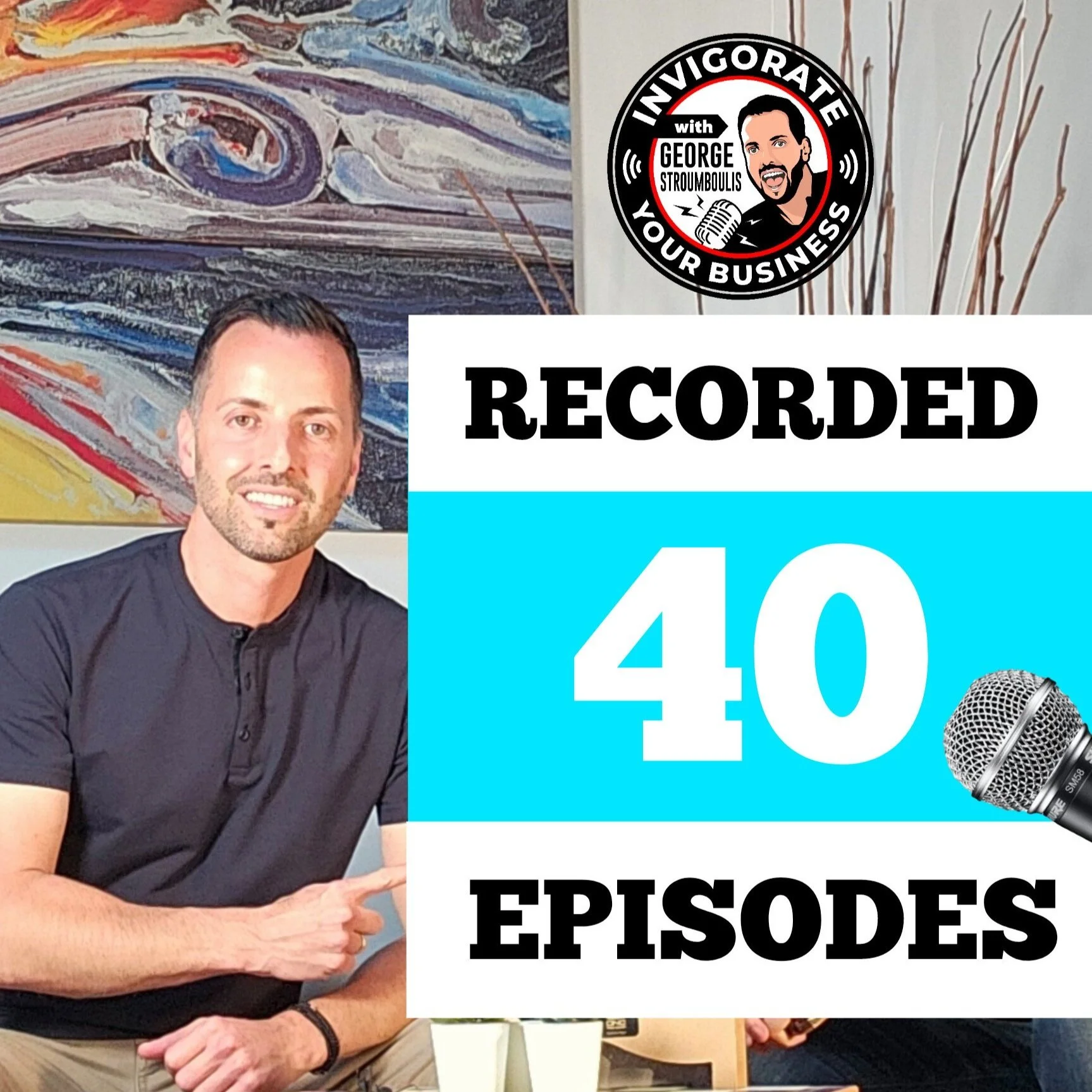STARTUP TO THE NEW YORK STOCK EXCHANGE FOR OUR COMPANY
“And Overnight, We were Part of a Big Multinational Public Company and that wasn’t really our Style.”
FROM STARTUP TO ACQUISITION - NEW YORK STOCK EXCHANGE
My Background is Lighting. Commercial, Industrial on an International Scale. Launched the Company 8 Years Ago with my Business Partner. We were Part of a Previous Startup in the Lighting Space.
That was Successful, Sold, Went Public on the New York Stock Exchange. And Overnight, We were Part of a Big Multinational Public Company and that wasn't really our Style. Working within that Framework. So We Decided, How can We Change the Lighting Game.
How can We Bring Something Dynamic to our Clients. So We Launched Ideoli, the actual Root of the Word Comes from "ideolipsis" the Greek Word for Obsession.
I was part of a startup where the team worked their asses off to help take this to acquisition, getting listed on the New York Stock Exchange with our parent company.
How to get your startup acquired
Getting your startup acquired can be a strategic goal for many entrepreneurs. While acquisition opportunities can arise unexpectedly, there are proactive steps you can take to increase your startup's attractiveness to potential acquirers. Here's a roadmap to help you navigate the process:
Build a Valuable Product or Service:
Start by creating a product or service that solves a real problem or addresses a market need. The value you provide is a fundamental factor in attracting potential buyers.
Market Validation:
Demonstrate that your product has a market demand and a growing customer base. Metrics like user acquisition, revenue growth, and customer retention can make your startup more appealing.
Strong Intellectual Property (IP):
Protect your intellectual property, such as patents, trademarks, and copyrights, to enhance your startup's value. Strong IP can make your company more attractive to acquirers.
Build a Talented Team:
Assemble a skilled and motivated team that can help scale your startup. A talented workforce is an asset that potential acquirers may seek.
Solid Financials:
Maintain accurate financial records and strive for profitability or a clear path to profitability. A healthy financial position can make your startup more enticing.
Strategic Partnerships:
Form strategic partnerships or collaborations with larger companies in your industry. These partnerships can lead to acquisition discussions when your startup aligns with their goals.
Customer Relationships:
Foster strong customer relationships and a loyal customer base. Positive customer reviews and testimonials can be persuasive to potential acquirers.
Market Research and Competitive Analysis:
Continuously conduct market research and monitor your competition. Understanding your industry landscape can help you identify potential acquirers and pitch your startup effectively.
Networking and Relationships:
Attend industry events, conferences, and networking gatherings to build relationships with potential acquirers or their representatives. Sometimes, acquisitions start with a casual conversation.
Prepare a Pitch and Due Diligence Package:
Create a compelling pitch deck that outlines your startup's value proposition, growth potential, and financial performance. Prepare a due diligence package with all relevant documents and data for potential buyers to review.
Engage with M&A Advisors or Brokers:
If you're unsure about the acquisition process or need help identifying potential buyers, consider hiring mergers and acquisitions (M&A) advisors or brokers. They can connect you with interested parties and guide you through negotiations.
Negotiate and Close the Deal:
When you receive interest from potential acquirers, engage in negotiations. Be prepared for discussions about valuation, deal structure, and terms. Consult legal and financial experts to navigate the negotiation process effectively.
Legal and Regulatory Compliance:
Ensure that your startup complies with all relevant laws and regulations. Legal issues can be a significant obstacle to an acquisition.
Post-Acquisition Planning:
Think about what role you and your team will have post-acquisition. Be prepared to integrate your startup into the acquiring company's operations.
Be Patient and Flexible:
Acquisitions can be complex and time-consuming processes. Be patient and open to adapting your plans as negotiations progress.
Alternative Exits:
Keep in mind that acquisition isn't the only exit strategy. Consider other options like mergers, partnerships, or even an initial public offering (IPO) based on your startup's circumstances and goals.
Remember that the acquisition process can vary significantly depending on the industry, the size of your startup, and the preferences of potential acquirers. Stay informed, be adaptable, and maintain a strong focus on building a valuable and sustainable business.
HOW TO GET LISTED ON THE NEW YORK STOCK EXCHANGE
Getting listed on the New York Stock Exchange (NYSE) is a significant milestone for any company. It provides access to public capital markets and can enhance your company's visibility and credibility. Here are the steps involved in getting listed on the NYSE:
Eligibility Assessment:
Determine if your company meets the NYSE's eligibility requirements. These requirements can vary and may include criteria related to financial performance, market capitalization, corporate governance, and more.
Select Advisors:
Assemble a team of advisors, including legal counsel, financial advisors, and underwriters. These professionals will help you navigate the listing process and ensure compliance with regulatory requirements.
Financial and Legal Due Diligence:
Conduct a thorough financial and legal audit of your company to identify and address any issues that may impact the listing process.
Financial Statements:
Prepare and audit your company's financial statements in accordance with Generally Accepted Accounting Principles (GAAP). These statements should be reviewed by a reputable auditing firm.
Corporate Governance:
Ensure that your company has robust corporate governance practices in place, including a board of directors with relevant expertise and independent directors.
Underwriting:
Engage an underwriting firm or investment bank to assist with the offering. Underwriters help price and distribute your shares to the public.
Satisfy SEC Requirements:
File a registration statement with the U.S. Securities and Exchange Commission (SEC) under the Securities Act of 1933. This document includes detailed information about your company's operations, financials, and risks. The SEC reviews and approves this filing.
NYSE Application:
Submit an application for listing on the NYSE. This application includes detailed information about your company, its management, and its compliance with NYSE listing standards.
Compliance with Listing Standards:
Ensure that your company complies with NYSE listing standards, which cover aspects such as minimum market capitalization, minimum share price, and corporate governance requirements.
Listing Fee Payment:
Pay the listing fees required by the NYSE. These fees can vary based on your company's size and the number of shares being offered.
Roadshow and Investor Relations:
Conduct a roadshow to promote your company to potential investors. This involves meetings and presentations to institutional investors and analysts.
NYSE Approval:
Once your application is approved by the NYSE and the SEC, your company's shares will be listed for trading on the NYSE.
Trading Commencement:
Coordinate with the NYSE to determine the date when your company's shares will begin trading on the exchange.
Post-Listing Compliance:
Maintain compliance with NYSE listing standards and regulatory requirements. This includes timely reporting of financial results, adherence to corporate governance rules, and fulfilling ongoing disclosure obligations.
Market Presence and Growth:
Continue to engage with investors, build market presence, and work to grow your company's value as a publicly traded entity.
Getting listed on the NYSE is a complex and regulated process that requires careful planning and execution. It's crucial to work closely with experienced professionals who can guide you through each step and ensure compliance with all legal and regulatory requirements.





















